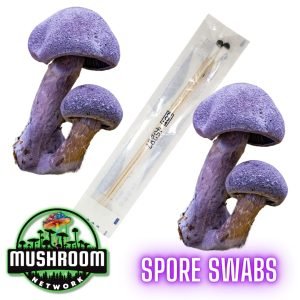The relationship between humans and mushrooms stretches far beyond modern culinary and medicinal applications. Delving deep into the annals of history reveals intriguing tales of ancient civilizations utilizing fungi for spiritual, ceremonial, and therapeutic purposes.
The use of mushrooms in ancient rituals is a testament to humanity’s enduring fascination with these mysterious organisms. While modern science has granted us the tools to understand the biochemical intricacies of mushrooms, our ancestors revered them for their profound effects on consciousness and their presumed connection to the divine.

The Aztecs and Psychedelic “Teonanácatl”:
Divine Flesh of the Gods: The Aztecs referred to certain mushrooms as “Teonanácatl,” which translates to “flesh of the gods.” Consumed during religious ceremonies, these mushrooms facilitated communion with deities and allowed priests and shamans to divine the future.
Mesoamerican Codices: Archaeological findings, such as the ancient Mesoamerican codices, depict scenes of mushroom consumption. These illustrations often accompany religious or shamanic ceremonies, indicating their sacred significance.
The Conquest and Cultural Suppression: With the arrival of Spanish conquistadores, the religious practices of the Aztecs, including mushroom rituals, came under scrutiny. These customs were suppressed, deemed heretical, and replaced with Christian rites. However, the traditions survived in secrecy among indigenous communities.

Siberian Tribes and the Fly Agaric:
Euphoria and Shamanic Journeys: The Fly Agaric (Amanita Muscaria) mushroom, recognized by its iconic red cap dotted with white, was consumed by Siberian tribes. The intoxication it produced was central to shamanic rituals, guiding spiritual leaders on visionary journeys.
Reindeer and Rituals: Intriguingly, reindeer in Siberia are known to consume Fly Agaric. The tribes observed this and deduced the mushroom’s effects. It’s speculated that the flying reindeer lore, which later influenced global legends, has its origins here.
Transmission to Other Cultures: As nomadic tribes traversed Siberia and interacted with neighboring regions, the ritualistic use of the Fly Agaric mushroom spread. This facilitated a cultural exchange and introduced new communities to the spiritual potential of fungi.
The universe of mushrooms is expansive, each variant bearing its own unique charm and characteristics. The Marketplace on the 🍄 Mushroom Network is a testament to this diversity. It is a haven for those seeking a deeper understanding of the magical world of mushrooms. If you’re keen on learning more about this type of mushroom and other mushroom variants, this Marketplace is your ultimate resource.
Other Ancient Civilizations and Fungal Fascinations:
Mayan Mushroom Stones: The ancient Mayans left behind intricately carved mushroom stones, which historians believe were symbolic of the ceremonial use of mushrooms. These artifacts, dating back over a millennium, underline the spiritual significance of fungi in Mayan culture.
The Mysteries of Eleusis: In ancient Greece, the Eleusinian Mysteries were renowned initiation ceremonies. Some scholars propose that a potion named ‘kykeon‘ used in the rituals contained psychoactive substances, possibly derived from fungi, that facilitated profound mystical experiences.
The Soma Enigma: The Rigveda, a sacred Hindu text, extensively mentions ‘Soma,’ an intoxicating elixir. While its exact composition remains a mystery, some theories suggest it might have been a brew containing psychoactive mushrooms.
Not sure where to start? The 🍄 Mushroom Academy offers a wide range of courses tailored to your needs. Whether you’re a beginner eager to learn or an experienced mycologist looking to broaden your knowledge, the 🍄 Academy has something for everyone.

Mycelium Memories:
As we reflect on our ancestors’ reverence for mushrooms, it becomes evident that fungi have consistently bridged the divide between the earthly and the ethereal. While modernity often distances us from ancient practices, the allure of mushrooms — as gateways to the divine — remains timeless.
Don’t forget to check out the 🍄 Mushroom Network’s Marketplace to see what’s available. But hurry, our shelves are constantly evolving, and you wouldn’t want to miss out on this wonderful mushroom. Join our growing network of Patrons, Genetics, and Mycologist Vendors only on the 🍄 Mushroom Network!
Recommended Reads:
Unlocking the Nutritional Secrets of the Chestnut Mushroom
Step into the world of Pholiota Adiposa, commonly known as the Chestnut Mushroom, a gastronomic...
Read More...Unveiling the Mysteries of Mushroom Mycelium: A Journey to the Outer Reaches of Space
Mushrooms have long fascinated us with their intriguing forms and culinary delights. But did you...
Read More...The Scholarly Overview of Micro-dosing Psilocybin Capsules: A Responsible and Educational Approach
About This Article: 🍄 Dive deep into the educational realm of micro-dosing psilocybin capsules with...
Read More...King Oyster Mushroom: A Royal Delicacy
King Oyster Mushroom: A Royal Delicacy, delves deep into the culinary applications of this majestic...
Read More...Whoa there, Spore Sport! 🍄 Looks like you’re not logged in yet. Don’t you know what you’re missing? MYCO-CREDITS! Imagine all the fungal fun you could have. It’s like finding a Morel in May and not picking it. Tragic, right? Log In or Become a Myco-Patron and start racking up those credits. It’s more rewarding than finding a mushroom in your backyard! 🌟🏡













